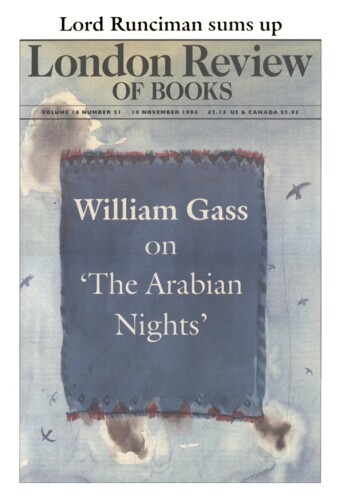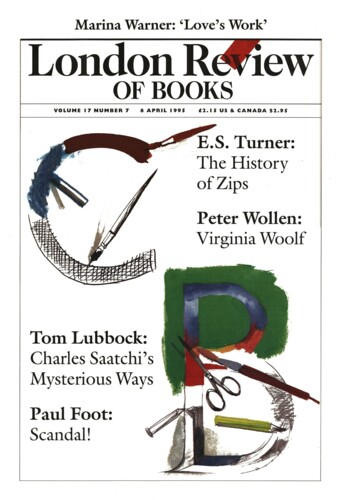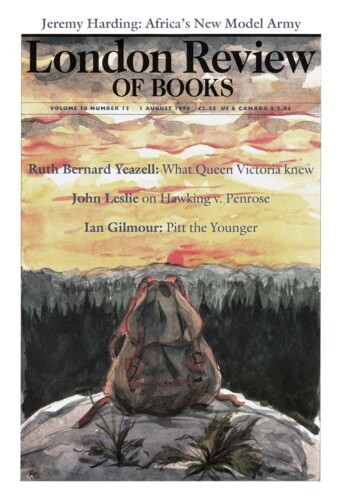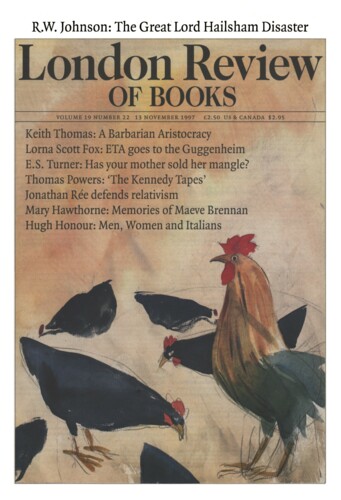Respectability
Mary Hawthorne, 23 June 1994
Tom Murphy’s play Too Late for Logic centres on the response of a psychically disintegrated family to the death of one of its members. An oracular, disembodied voiceover gives the summation: ‘A group of porcupines on a cold winter’s day crowded close together to save themselves from freezing by their mutual warmth. Soon, however, they felt each other’s spines, and this drove them apart again. Whenever their need brought them more closely together, this – evil – intervened, until, thrown this way and that, between the cold and the spines, they found a moderate distance from one another at which they could survive best.’ This same ‘evil’ – the quills of competing demands and interests with which the members of a family cannot help poking and pricking one another and which, keeping them separate, rule out the possibility of abiding love, though not the desire for it – is also at the heart of Murphy’s new book, a first novel, The Seduction of Morality.’





